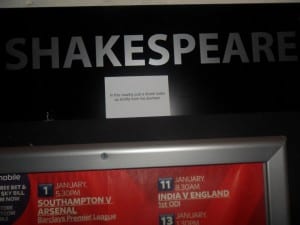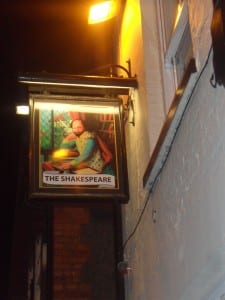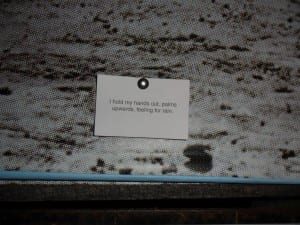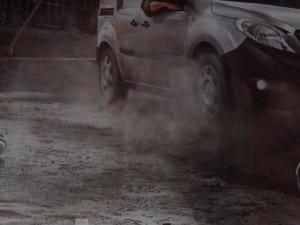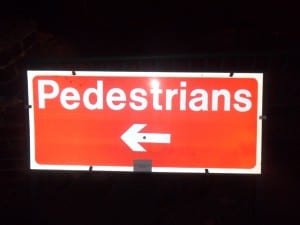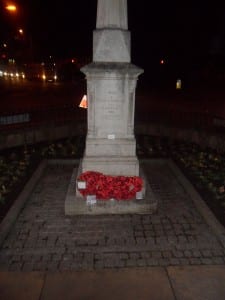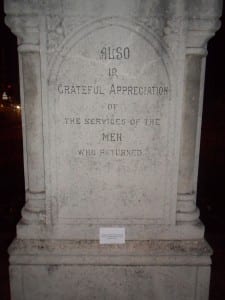Marc Augé defines the concept of a place in a setting of the supermodernity. The latter of the reading proposes a definition of place as the contrast of space, he describes space as a “frequented place” ((Marc Augé (1995) Non-Places: Introduction to an Anthropology of Supermodernity, trans. John Howe, London: Versop. p.79)). Consequently, place can be seen as an empty geographical landmark which is yet to be filled with life ((Marc Augé (1995) Non-Places: Introduction to an Anthropology of Supermodernity, trans. John Howe, London: Versop. 81)). In essence he is talking about transitional places, for example airports, motorways etc, the places that are part of the architecture of modern life and capitalism. Fundamentally they seem without identity and purpose built to cause a friction-less society, a society that no longer creates a united identity. Another aspect of non-places is a sense of sleep walking or amnesia, journeying through everyday life with a resistance to remembering the mundane journeys that occur every day.
Marc Augé also highlights that we spend much of our time in ‘non places’, to me it highlights an illusion of being part of a much grander scheme, than the current lives we may be leading. ‘These days, surely, it was in these crowded places where thousands of individual itinerary converged for a moment, unaware of one another, that there, survived something of the uncertain charms of the wastelands’ ((Marc Augé (1995) Non-Places: Introduction to an Anthropology of Supermodernity, trans. John Howe, London: Verso, p. 81 )) This can be considered to be an analysis of modern life, highlighting a glimpse at a Utopian city, a city where people remember the mundane and turn it into something that confronts the expectation of what reality is. This theory links to that of Lyotard and his explanation of the postmodern in relation to Avant Garde theatre, this theatre was set out to change the rules of art by testing the limits of representation and style. In conclusion much like site specific work it confronts the public’s expectations about what art should be.
Taking these notions on board, for the task of placing cards around Lincoln, I chose places that people pass on their mundane journeys. I wanted to make people remember their routes because of where I had placed my cards. In essence I wanted to make places more interesting and turn places into areas where you can form an identity.
The first place I chose to place my card was outside ‘The Shakespeare pub’. I decided to place it here in order to cause a reaction from the regular ‘punters’. I wanted to evoke a sense of awareness to the beauty of the building without focussing solely on the alcohol within the space.
After reading the second card I decided to concentrate on the beauty of the words, I wanted the words to stand out on a piece of artwork. Following the ideologies of Lyotard, I found beauty in the mundane, placing my card on a billboard. I felt that this highlighted the words and reflected the beauty.
The third card reading ‘All these people are anonymous extras. I wouldn’t hold out much hope for them’ was my favourite. After reading this card, it made me think of many places I could put it, the first being a Pedestrian sign post, implying the very literal. However, the place I decided to leave my card was on a memorial statue, there are many reasoning’s behind this, the first being after passing it every day the card made me pay attention to the beauty and care put into the statue. The second being that it is an unexpected shock for passers-by to witness beauty that has been ‘vandalised’ with words of beauty.
After completing this task, i feel that this is something i want to take on board when creating my site specific piece, one of the beauriful places within Lincoln is the Grandstand
After reading Mike Pearson’s ‘Why Performance’ and visiting the Grandstand on a drift, I decided to research further into how a ‘performance can illuminate the historically and culturally diverse ways in which a particular landscape has been made, used, reused and interpreted; and help make sense of the multiplicity of meanings that resonate from it’ ((Pearson, M (2011) Why Performance)) Bearing this quote in mind, I decided to research further into the Grandstand as it occurred to me that after living in Lincoln for nearly two years and passing the grandstand when travelling in and out of Lincoln I had no idea of its uses, past or present. As expected Lincoln racecourse is a former horse racing venue, had my detective hat on to work that one out! It was the original location of the Lincoln handicap which I found out to be a flat handicap horse race opened to thoroughbred horses aged four years or older. The racecourse was established by the Lincoln Corporation on West Common in 1773.
The Grandstand is now a grade II listed building, during the time when the Grandstand was used as a race course the A57 still passed between the course and the grandstand, this led to the road being closed during race meetings, allowing the BBC cameras to follow the racers. This idea of closing the road to allow the race meets to happen linked with the Reading Weeks reading and in particular Making Journeys in Live Art. The Study Room guide is concerned with the value of journeys as an emerging form in Live Art, this theory made me question the idea of attempting to create a site specific performance around the historical elements of the grandstand. With a strong focus in particular on the destruction and yet beauty that could be created by closing down the A57 and trying to recapture the historical values that Lincoln had to offer. How would the local Lincoln population react? Would it create Nostalgia in the older generation? Or is this an idea that needs leaving to the professionals? Either way as stated by Mike Pearson ‘Public performances can enhance public appreciation and understanding of places and describe the process of landscape formation’ ((Pearson, M (2011) Why Performance)) This is something that I very much hope is the case with the majestic grandstand that should be a part of Lincoln’s future as well as Lincoln’s past.
Because of this I want to create a piece which confronts the audiences expectations of art and engages a topic which isn’t considered a focal point in today’s society. I want to illuminate the beauty within the site whilst referring to the ugliness of the past, creating a juxtaposition for the audience to contend with. However throughout the performance i want to create a united identity, bringing audience member and performer into one space creating an installation piece.
